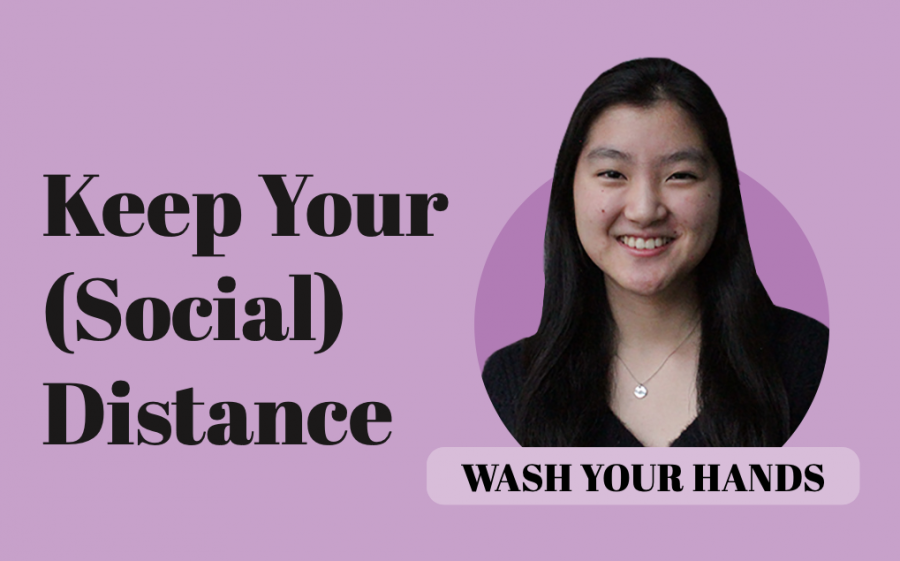For the past few days, my social media feed has been completely flooded with posts about COVID-19. From people joking about cheap flight prices to memes about online classes, it’s clear that humor has been an important coping mechanism for many—including myself—who are dealing with these less than ideal circumstances. All jokes aside, however, it’s still important to treat this situation seriously and remember why schools and businesses are being closed in the first place. No, young, healthy people may not have much to worry about when it comes to COVID-19, but what about the elderly or those with underlying chronic conditions? According to the Chinese Center for Disease Control and Prevention, the COVID-19 death rate for those who are between 10 and 19 years old is about 0.2%, but this number jumps to 14.8% for those who are 80 years old or older. Therefore, it is everyone’s responsibility to minimize the spread of COVID-19 for the sake of not only themselves but also those who are more vulnerable to the disease; even if you choose not to protect yourself, the least you can do is try to protect others.
Yesterday, the Indiana State Department of Health reported the second COVID-19 death in Indiana and six new positive cases of the virus. Although it’s already too late to stop COVID-19 from affecting our community, it’s not too late to do something about the problem while we still can: social distancing. Defined as “remaining out of congregate settings, avoiding mass gatherings, and maintaining distance (approximately 6 feet or 2 meters) from others when possible” by the Centers for Disease Control and Protection (CDC), social distancing is what the CDC has recommended to help decrease community transmission of the disease. By now, I’m sure most people have already heard about “flattening the curve,” which is essentially creating a more gradual increase and decrease of COVID-19 cases to reduce the strain on the limited resources of the national health care system. According to a recent report by researchers at Imperial College London, about 2.2 million Americans would die from the virus if no restrictions were put in place in the United States. However, recent government action has already helped enforce new restrictions: on Monday, Gov. Eric Holcomb ordered all bars and restaurants to close for in-person dining. By further emphasizing social distancing, such mandates are helping reduce the spread of COVID-19. With that being said, however, we still need to take these businesses into consideration—how will they stay afloat with a sharp decline in foot traffic? Though this may seem like a lose-lose situation, we can continue to support these businesses by ordering takeout or no-contact delivery, purchasing gift cards or shopping online.
While the current situation may seem bleak, we can still turn the tide with everyone’s help. Don’t get me wrong—I would much rather be spending time with my friends or going out to eat than staying at home, but we’re all going to have to make sacrifices if we want to slow the spread of COVID-19. Now, more than ever, we need to work together to ensure the health and safety of those around us. Of course, it would be impractical to ask everyone to stay home entirely because people still need to go to work or get medications, food and other basic necessities, but we should try to avoid physical contact with others when possible. I’m not saying we should be panicking or completely cutting off social contact with others, but get-togethers with friends or trips to the mall can wait—I promise.
The views in this column do not necessarily reflect the views of the HiLite staff. Reach Wendy Zhu at wzhu@hilite.org

































![AI in films like "The Brutalist" is convenient, but shouldn’t take priority [opinion]](https://hilite.org/wp-content/uploads/2025/02/catherine-cover-1200x471.jpg)








































![Review: “The Immortal Soul Salvage Yard:” A criminally underrated poetry collection [MUSE]](https://hilite.org/wp-content/uploads/2025/03/71cju6TvqmL._AC_UF10001000_QL80_.jpg)
![Review: "Dog Man" is Unapologetically Chaotic [MUSE]](https://hilite.org/wp-content/uploads/2025/03/dogman-1200x700.jpg)
![Review: "Ne Zha 2": The WeChat family reunion I didn’t know I needed [MUSE]](https://hilite.org/wp-content/uploads/2025/03/unnamed-4.png)
![Review in Print: Maripaz Villar brings a delightfully unique style to the world of WEBTOON [MUSE]](https://hilite.org/wp-content/uploads/2023/12/maripazcover-1200x960.jpg)
![Review: “The Sword of Kaigen” is a masterpiece [MUSE]](https://hilite.org/wp-content/uploads/2023/11/Screenshot-2023-11-26-201051.png)
![Review: Gateron Oil Kings, great linear switches, okay price [MUSE]](https://hilite.org/wp-content/uploads/2023/11/Screenshot-2023-11-26-200553.png)
![Review: “A Haunting in Venice” is a significant improvement from other Agatha Christie adaptations [MUSE]](https://hilite.org/wp-content/uploads/2023/11/e7ee2938a6d422669771bce6d8088521.jpg)
![Review: A Thanksgiving story from elementary school, still just as interesting [MUSE]](https://hilite.org/wp-content/uploads/2023/11/Screenshot-2023-11-26-195514-987x1200.png)
![Review: "When I Fly Towards You", cute, uplifting youth drama [MUSE]](https://hilite.org/wp-content/uploads/2023/09/When-I-Fly-Towards-You-Chinese-drama.png)
![Postcards from Muse: Hawaii Travel Diary [MUSE]](https://hilite.org/wp-content/uploads/2023/09/My-project-1-1200x1200.jpg)
![Review: "Ladybug & Cat Noir: The Movie," departure from original show [MUSE]](https://hilite.org/wp-content/uploads/2023/09/Ladybug__Cat_Noir_-_The_Movie_poster.jpg)
![Review in Print: "Hidden Love" is the cute, uplifting drama everyone needs [MUSE]](https://hilite.org/wp-content/uploads/2023/09/hiddenlovecover-e1693597208225-1030x1200.png)
![Review in Print: "Heartstopper" is the heartwarming queer romance we all need [MUSE]](https://hilite.org/wp-content/uploads/2023/08/museheartstoppercover-1200x654.png)




